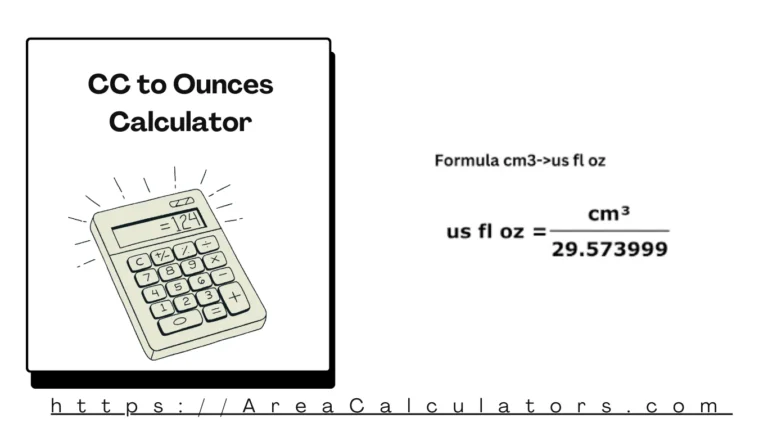A Pound Per Foot Calculator is a specialized tool designed to compute the weight of an object per foot of length. Whether you’re working with piping, beams, cables, or metal rods, knowing the weight per foot helps in transportation, installation, and structural design.
This calculator has found its place in manufacturing, construction, engineering, and material science because it saves time and ensures accuracy in logistical planning and structural safety.
What Does Pound Per Foot Mean?
Pound per foot (lb/ft) is a unit of linear weight—how much a material or item weighs for each foot of its length. It’s a convenient metric that combines mass and dimension, often used in specifying and handling materials in industries like construction and engineering.
For example, a steel pipe might weigh 10 lb/ft, meaning every linear foot of that pipe adds 10 pounds to the overall weight.
Understanding the Importance of Weight Per Unit Length
Why does this matter? Because weight affects:
-
Structural Load: Engineers need to calculate how much weight a beam or column must support.
-
Transportation Cost: Heavier items require different handling.
-
Safety Compliance: Overloading equipment or structures can be dangerous.
Understanding the pound per foot measurement ensures efficient use of resources and helps avoid costly or dangerous miscalculations.
The Formula Behind Pound Per Foot Calculation
The core formula depends on the volume and density of the material:
Weight per foot = (Cross-sectional area × Density) × 1 foot
Or for simpler use:
lb/ft = Total Weight / Length (in feet)
This means if you know the total weight and the length of the object, you can easily find its weight per unit length. But material shape (like round bars, I-beams, or hollow tubes) also plays a role.
What is a Pound Per Foot Calculator?
The Pound Per Foot Calculator is a digital tool that does all the heavy lifting for you. It lets you input the material type, cross-section, and dimensions, and then outputs the linear weight in pounds per foot.
Some calculators also offer options to switch between imperial and metric units, compare materials, and visualize cross-sections—all in a single interface.
How to Use a Pound Per Foot Calculator Step-by-Step
Here’s a simple breakdown:
-
Choose the Material: Steel, aluminum, plastic, etc.
-
Input the Dimensions: Diameter, width, height, or thickness depending on shape.
-
Enter the Length: Usually in feet.
-
Click Calculate: The result shows the weight per foot instantly.
Some advanced calculators even account for hollow cores or insulation layers.
Benefits of Using a Pound Per Foot Calculator
-
Saves Time: Eliminates complex manual calculations.
-
Improves Accuracy: Reduces human error.
-
Streamlines Project Planning: Easier to estimate material needs.
-
Universal Application: Works for multiple industries and materials.
Whether you’re a structural engineer or a DIY enthusiast, the calculator is an indispensable tool.
Where is Pound Per Foot Measurement Commonly Used?
You’ll find this measurement used in:
-
Construction: For beams, pipes, rebar.
-
Manufacturing: For extrusion weights.
-
Logistics: Shipping and handling of long items.
-
Architecture: Planning facade and support structures.
-
Utility Services: Estimating the weight of cables and wires.
Knowing weight per foot helps in selecting the right material and ensuring safety and stability.
Examples of Pound Per Foot Calculation in Real Life
Let’s say you have:
-
A steel rod weighing 200 pounds
-
The rod is 20 feet long
Using the formula:
200 lbs / 20 ft = 10 lb/ft
This means every foot of that rod weighs 10 pounds. Such calculations are critical when ordering materials or verifying structural load capacities.
Manual Calculation vs. Pound Per Foot Calculator
| Criteria | Manual Method | Using Calculator |
|---|---|---|
| Speed | Time-consuming | Instant |
| Accuracy | Prone to human error | Highly precise |
| User Skill Needed | Moderate to high | Beginner-friendly |
| Convenience | Requires formulas | Plug-and-play functionality |
The calculator wins hands down when it comes to ease, reliability, and speed.
Key Inputs Required for Accurate Calculation
To ensure precise results, the following inputs are needed:
-
Material Type: Different materials have different densities.
-
Dimensions: Diameter, width, thickness, etc.
-
Length: Overall length if converting total weight.
-
Shape: Pipe, solid bar, beam, etc.
The more detailed your inputs, the better the accuracy of the results.
How Material and Shape Affect Weight Per Foot
Two identical shapes made from different materials won’t weigh the same. For example:
-
Steel: Dense and heavy
-
Aluminum: Lightweight
-
PVC: Very light
Shape also matters—solid rods weigh more than hollow tubes of the same size. A good calculator accounts for both density and cross-section to give you spot-on results.
Common Mistakes to Avoid in Calculation
-
Using Incorrect Units: Mixing metric with imperial.
-
Forgetting Hollow Space: Especially with tubes and pipes.
-
Assuming Material Uniformity: Some composites vary in density.
-
Ignoring Tolerances: Slight variations can impact total weight significantly in large projects.
Avoiding these mistakes ensures reliable and safe construction or design.
Features of a Reliable Pound Per Foot Calculator
Look for these features:
-
Preloaded Material Densities
-
Shape Selection Options
-
Instant Calculations
-
Clear Interface
-
Unit Conversions
These features simplify the entire process and help in a range of applications.
FAQs:
Q1: What is the main purpose of this calculator?
To determine how much a material weighs per foot, useful in design, shipping, and construction.
Q2: Can I use this for non-metal materials?
Yes, provided you know the material’s density.
Q3: Is the calculator accurate for custom profiles?
If dimensions and density are precise, the results are reliable.
Q4: Can I calculate for cables and wires?
Absolutely. It’s ideal for linear materials.
Q5: Does it work for metric units?
Many tools support unit conversion between pounds, kilograms, meters, and feet.
Q6: Do I need engineering knowledge to use it?
Not at all. It’s designed for ease of use by anyone.
Conclusion:
The Pound Per Foot Calculator transforms a technical challenge into a smooth, accurate, and quick solution. From estimating shipping loads to selecting the right beam for a building, this tool provides clarity and confidence.
It’s a perfect example of how a simple tool can save time, enhance accuracy, and improve outcomes across various industries. So next time you need to measure up—let the calculator do the heavy lifting.






